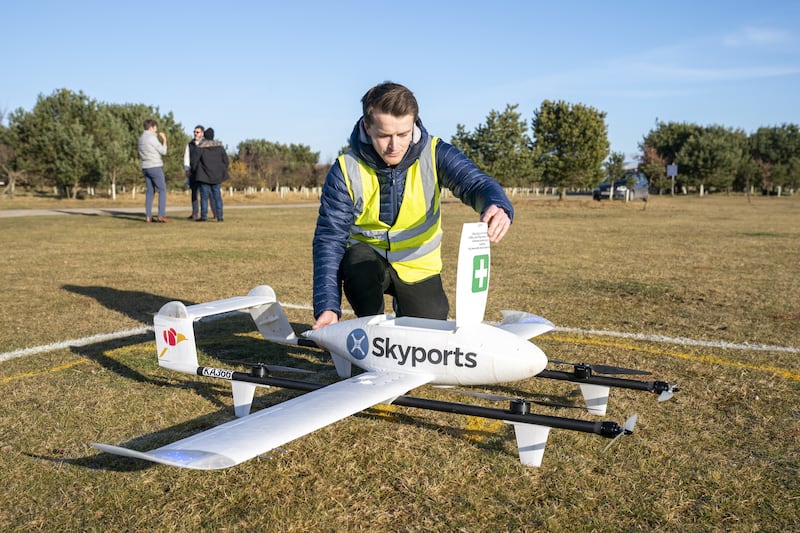A small-scale medical drone delivery service in Scotland will begin within weeks as the opening gambit of an ambitious programme to help service the offshore wind industry.
Drones will deliver samples and equipment from rural surgeries to a hospital in Dundee before moving on to more ambitious land-to-sea projects, developers say.
The hub of the project is a former airfield on the outskirts of the coastal town of Montrose that is being developed as a centre to support the green energy sector and include Scotland’s first drone port.
The drone programme is planning a second phase of tests this spring to deliver medical supplies to anchored ships right outside the port town.
The project’s ambitions then stretch 27 kilometres out to sea, where Scotland’s largest offshore wind farm, Seagreen, is expected to start producing power later this year.
The programme aims to run a drone around the Seagreen site to demonstrate the potential for drone-based surveys, deliveries and inspections in the wind energy sector.
“We will demonstrate in this project that we can deliver to a ship, we can take off and land at a wind farm and we can fly a sufficient distance from the drone port to the wind farms,” said Richard Stark of DTLX, which is running the Mercury Drone Ports Project.
“The intention then is to do another project that will knit them all together.”
The 114 wind turbines under construction at Seagreen are expected to be fully operational by 2023, supplying 1.1 gigawatts of power — enough for 1.6 million homes.
Scotland is rapidly expanding its offshore wind sector and awarded the development rights in January for the projects, which will supply 25 gigawatts of energy.
Offshore wind projects in the UK currently produce about 10 gigawatts of power.
Mr Stark says the rapid growth of the industry shows the potential for drones to carry out work in a “safer, greener, cheaper” way than traditional deliveries and inspections using helicopters and boats.
The drone technology has already been successfully employed in Norway, where energy company Equinor was behind the world’s first offshore delivery to an oil platform in the North Sea. The four-metre drone flew about 80km to deliver a part for the platform’s lifeboat system.
Shore-to-ship drone deliveries have also been completed in the UK and places like Singapore, Mr Stark says, but the project in Montrose is seeking to build a larger regional operation that will attract developers to test their latest drone technology.
At the launch of the project, Minister for Scotland Iain Stewart said: “Drones have huge potential in Scotland, from connecting health services to remote communities, to helping maintain renewable energy installations, to assisting with Scottish aquaculture and environmental monitoring.”
Analysts say drones will play an increasingly large part in cutting the estimated $8 billion and rising annual cost of wind farm maintenance.
Research by US-based Levitate Capital, which invests in drones and other new transport technology, said that there was a market for about 21,000 drones to inspect the 400,000-plus wind turbines worldwide.
In the long-term, drones will be positioned at wind farms that fly from and return to boxes where they recharge and download information without an operator travelling to the site, it suggested.






